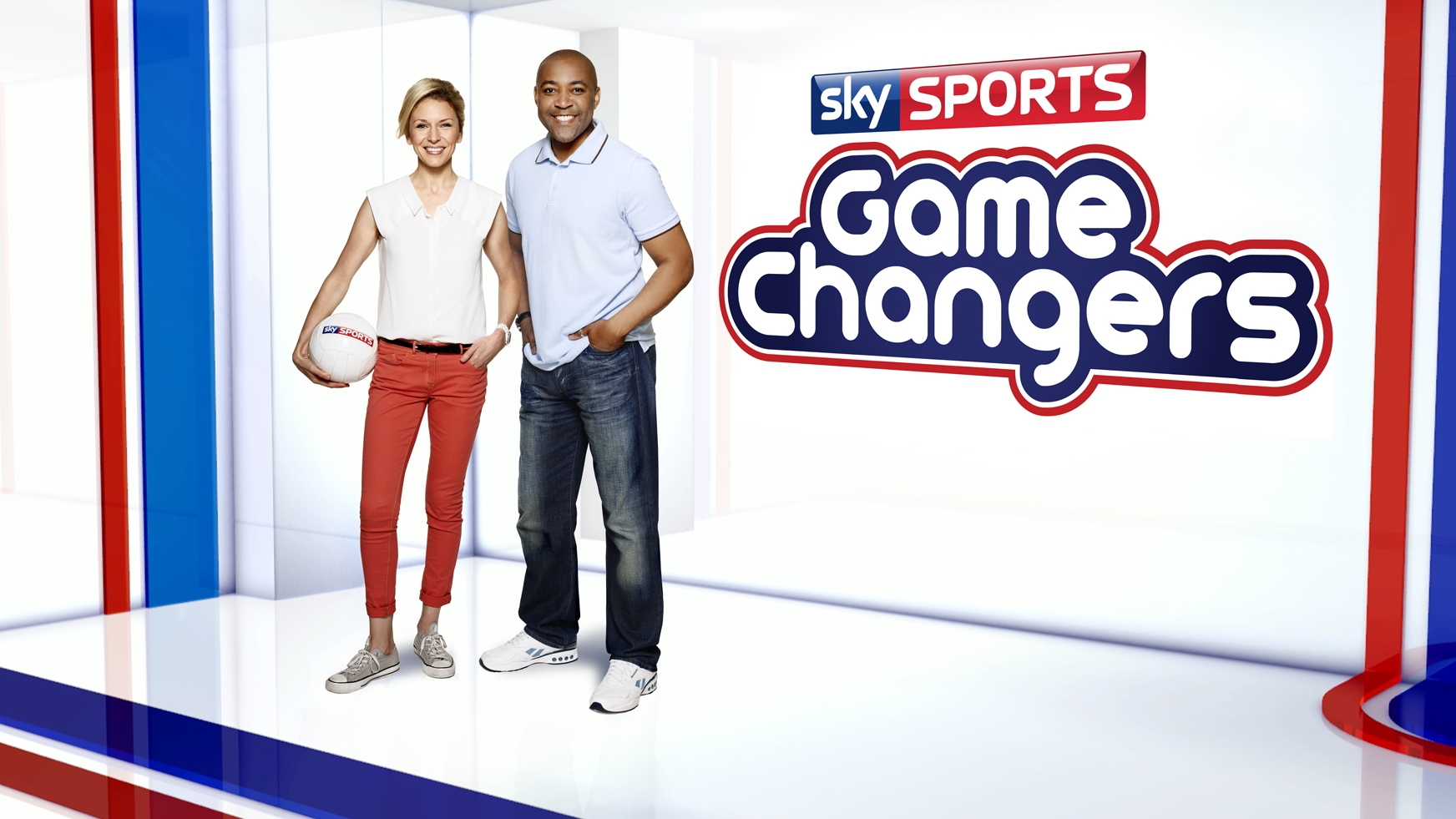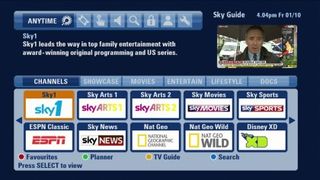
A quarter of a century ago today, on the 5th February 1989, Sky launched a tentative direct-to-home satellite TV service to UK households, ushering in the first age of multi-channel television in the process.
At the time there were just four terrestrial TV channels serving British telly addicts, broadcasting almost nothing of interest.
Mr Blobby was still a glint in Noel Edmond's eye and Sylvester McCoy was bringing the original run of Doctor Who to an ignominious close.
The only reason anyone owned a satellite dish at the time was to watch lederhosen smut from Germany.
Hardly anyone seemed to grasp the portent of the new service, but television would never be the same again...
The launch of Sky TV
"Sky's highlights at the time comprised mainly of He-Man cartoons in the AM and WWF wrestling in the evenings"
Sky's origins track back before this DBS debut. Early broadcasts weren't to homes at all, but cable headends, for distribution over the UK's nascent cable TV network. Enthusiasts of the time derived great sport trying to intercept these broadcasts.
Get daily insight, inspiration and deals in your inbox
Sign up for breaking news, reviews, opinion, top tech deals, and more.
Back then Sky transmitted encrypted programmes from Eutelsat 1, alongside free to air offerings from rival Music Box and a dozen or so European broadcasters.
Hobbyists would watch this oddball channel selection on large (typically 1.5m) dishes parked in their gardens. More often than not these huge dishes were motorised, allowing owners to have a shufty at nearby Intelsat V, which carried Screen Sport and CNN amongst a few others.
Every so often Sky would drop into the clear, which was terribly exciting. Sky channel highlights at the time comprised mainly of He-Man and Transformers cartoons in the morning, pop videos over lunch, a sporting smorgasbord in the afternoon (NFL, yacht racing, etc) and the likes of Starsky & Hutch and American wrestling in the evening. A heady brew indeed!

Sport saves the day
"The satcaster soon deduced that sport, specifically football, was going to be its main subscription driver and saviour."
A year after launching its four-channel (entertainment, movies, news) direct to home service on the new Astra bird, Sky was struggling financially. It merged with rival consumer satellite service BSB, remembered principally for its unique squarial antenna, and duly became BSkyB.
The satcaster quickly deduced that sport, and specifically football, was going to be its main subscription driver.
A groundbreaking deal in 1992 saw the satcaster pony up over £300 million for exclusive rights to broadcast the FA Premier League; this was to irrevocably change the broadcast landscape, as well as the fortunes of top clubs.
Within months, the operation was posting an operational profit. But Sky didn't just boast deep pockets, it also brought a verve to deep sports coverage that UK viewers had never seen before. Pay TV had discovered a recipe for success.
"10 Britons have agreed to sell their kidneys to a German Count..."
Digital breakthrough
Up until this point, Sky had been an analogue service. This meant there was only a limited amount of bandwidth available for channels, and pictures were often blighted by 'sparklies'.
This all changed in 1998 with the launch of Sky Digital. The next stage in the evolution of British TV had begun.
Sky Digital tempted viewers with 140 channels and made interactive services a possibility for the first time. Tomorrow's space-age TV had finally arrived.
Even bigger innovations were to come. After a short dalliance with PVR pioneer TiVo, the broadcaster launched Sky+.
The concept of hard drive recording, when most consumers were still lovingly nurturing VHS tape collections, seemed positively alien.
But slowly and surely people fell in love with their Planner. Sky+ was just the first in what would be a string of technology advances.
The broadcaster identified the potential of mobile, forming a Mobile TV division, and adopted a successful triple-play (TV, Internet, home phone) strategy with the acquisition of broadband supplied Easynet in 2005.
And slowly, inexorably, it continued to polish its content to a high lustre. The broadcast establishment spluttered in disbelief when Sky's own Ross Kemp in Afghanistan was BAFTA nominated.
Pundits who had disparagingly dismissed satellite TV as council flat fodder, were wrong-footed by the launch of Sky Arts, then won over completely when Melvyn Bragg took the South Bank Show to the broadcaster.
Import-strength drama
Of course, Sky has never relied entirely on sports for growth. For the best part of a decade, it maintained a stranglehold on hot imports.
Sky 1 immediately became synonymous with The Simpsons (back when Bart was funny), which it broadcast exclusively until 1996.
It was later the home of genre crowd-pleasers like 24, Fringe, House and the Stargate franchise.
The positioning of Sky Atlantic as the home for premium content continues to prove potent.
Fueled by a deal with HBO which gives it exclusive access on the HBO archive, as well as first dibs on new shows, the channel broke Game of Thrones in the UK, along with lauded fare such as Boardwalk Empire and Mad Men.
Sky has just extended its partnership with HBO for a further five years. Shoring up this A-list content supply is a significant weapon in its escalating war with an increasingly ambitious BT.
By the mid-noughties it was Sky, rather than the BBC, that was setting the broadcast agenda for the UK TV industry.
With the launch of Sky+ HD boxes in 2006, Sky found itself in perfect sync with the shift to HD flat-panel viewing. Sky now boasts the largest selection of HD channels on any platform, still a magnetic feather in its cap.
Sky also pioneered Push VoD in the form of Anytime. A precursor to On Demand, it still shoves shows and movies onto subscriber's boxes in the dead of night.
But there have been the occasional missteps. Sky took some time to catch up with rival VirginMedia when it came to IP-delivered On Demand.

Satellite TV today
"Consumers are falling out of love with PVRS and tuners, with sales halving to just 1m units in 2013"
A reported 4.4 million subscribers now regularly dip into the broadcaster's 60-odd Catch Up and content archives.
Sky was also an early advocate of 3D, partnering with LG to bring funny-spec footie first to pubs and then subscribers. But viewer apathy was to relegate these three dimensional broadcasts from fixture to just another feature.
Sky remains undaunted, not least because it needs new technology to drive revenue. Significantly the uptake of set top boxes has slowed following the digital switch-over, according to market researchers at GfK.
Consumers are falling out of love with PVRS and tuners, with sales halving to just 1m units in 2013. This is doubtless one reason why the broadcaster has fast-tracked Now TV and will almost certainly take the lead in 4K UHD broadcasting, which will stimulate a new generation of tabletop hardware development. And it's probably got other tricks up its sleeve too. Holograms anyone?
From upstart analogue broadcaster to multi-platform entertainment technology juggernaut, Sky's evolution of the past 25 years has been little short of remarkable. The next 25 years should be mind-blowing.
Steve has been writing about AV and home cinema since the dawn of time, or more accurately, since the glory days of VHS and Betamax. He has strong opinions on the latest TV technology, Hi-Fi and Blu-ray/media players, and likes nothing better than to crank up his ludicrously powerful home theatre system to binge-watch TV shows.
Most Popular

